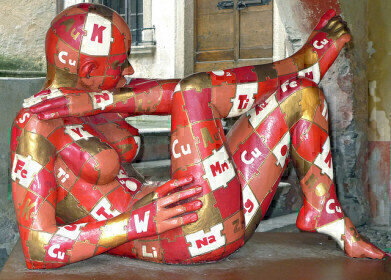News & Views
What Are Superheavy Elements?
Jan 27 2016
The world of science is continually transforming, and the widely recognised periodic table of elements is no exception. On December 30 2015 the table as we know it was changed forever, with IUPAC announcing the official discovery of four new elements. Before we delve into what they were, let’s take a closer look at superheavy elements themselves, and how they’re defined within the scientific sphere.
What makes an element superheavy?
Often shortened to SHE, the term ‘superheavy’ refers to elements with an atomic number that’s heavier than Rutherfordium (element 104). They aren’t naturally occurring, as they suffer radioactive decay when exposed to lighter elements. This means that scientists are restricted to creating them in labs.
Adding four new elements to the table
While the addition of the four new superheavy elements wasn’t made official until December 30, the discovery has been in progress for years. In 2012 the International Unions of Pure and Applied Chemistry (IUPAC) and Pure and Applied Physics (IUPAP) commissioned five independent researchers to delve deeper into the claimed existence of elements 113, 115, 117 and 118. Nuclear Physics Accelerator laboratories in both Russia and Japan had been researching their potential existence since 2004.
The final pieces of the ‘seventh row’ puzzle
The discovery of the new elements completes the seventh row of the periodic table. Now, all elements lying between hydrogen (with a singular proton nucleus) and element 118 (with a nucleus of 118 protons) have been officially discovered.
Approved names have yet to be decided, with IUPAC assigning the quartet of superheavy elements temporary labels. Element 113 is known as ununtrium (Uut), 115 is ununpentium (Uup), 117 is ununseptium (Uus) and 118 ununoctium (Uuo).
What it means for modern science
For scientists, the discovery of these new superheavy elements represents the opportunity to improve models of the atomic nucleus. Applications include nuclear medicine and research into element formation in the universe. They will also help to improve scientific understanding of atomic relativistic effects, as well as help scientists fathom the complex interactions of quantum systems in general.
Want to know more about the latest superheavy element additions? ‘The Periodic Table Has Four New Elements’ explores the expansion of the seventh row in further detail, with exclusive commentary from Jan Reedijk, president of IUPAC’s inorganic chemistry division. “The chemistry community is eager to see its most cherished table finally being completed down to the seventh row,” she says.
Image via Flickr Creative Commons. Photo credits: Xerones
Digital Edition
Lab Asia 31.2 April 2024
April 2024
In This Edition Chromatography Articles - Approaches to troubleshooting an SPE method for the analysis of oligonucleotides (pt i) - High-precision liquid flow processes demand full fluidic c...
View all digital editions
Events
Apr 28 2024 Montreal, Quebec, Canada
May 05 2024 Seville, Spain
InformEx Zone at CPhl North America
May 07 2024 Pennsylvania, PA, USA
May 14 2024 Oklahoma City, OK, USA
May 15 2024 Birmingham, UK


















